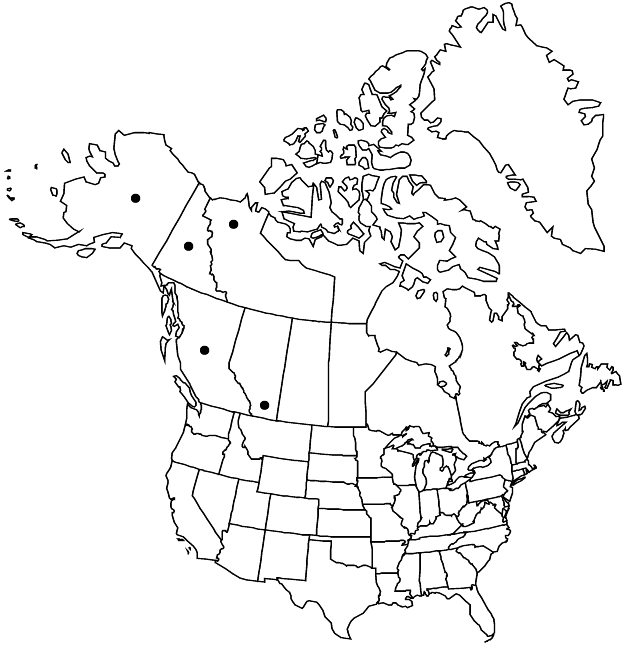Arenaria longipedunculata
Bot. Not. 119: 313, fig. 1. 1966.
Plants perennial, tufted to mat-forming. Taproots filiform; rhizomes slender, 0.5–3 cm. Stems 25–60+, erect to ascending, green, 2–4 cm; internodes terete, 1–4 times as long as leaves, shiny, minutely glandular-villous. Leaves briefly connate basally, with herbaceous sheath 0.1–0.3 mm, sessile; blade obscurely 1-veined, narrowly elliptic to lanceolate or ovate, 2–6 × 1–1.5 mm, subsucculent, margins thickened, herbaceous, shiny, ciliate proximally, apex acute to apiculate, pustulate, glabrous; axillary leaf clusters absent. Inflorescences terminal, solitary flowers. Pedicels erect in fruit, 10–20 mm, densely glandular-villous. Flowers: sepals green, obscurely veined, not keeled, ovate (herbaceous portion ovate), 3.5–4 mm, not enlarging in fruit, apex acute to acuminate, not pustulate, minutely stipitate-glandular proximally; petals broadly elliptic, 2.5–3.5 mm, 11/4–11/2 times as long as sepals, apex rounded. Capsules tightly enclosed by calyx, ellipsoid, 4–5 mm, 1–11/5 times as long as sepals. Seeds 13–20, brown, reniform, compressed, 0.7–0.9 mm, shiny, rugulose (30×). 2n = 40, 80.
Phenology: Flowering spring–summer.
Habitat: Gravelly, moist, montane areas, open alpine woods
Elevation: 50-1000 m
Distribution

Alta., B.C., N.W.T., Yukon, Alaska, Asia.
Discussion
Arenaria longipedunculata was for many years included in A. humifusa.
Selected References
None.